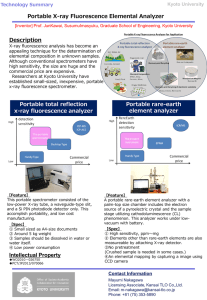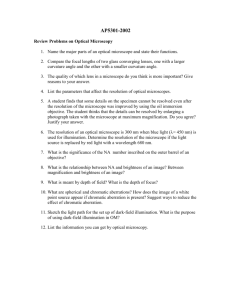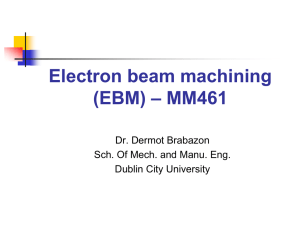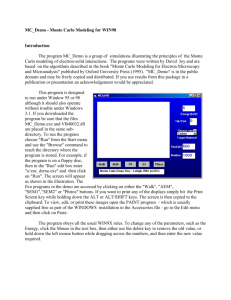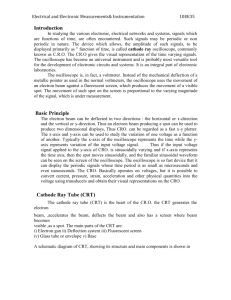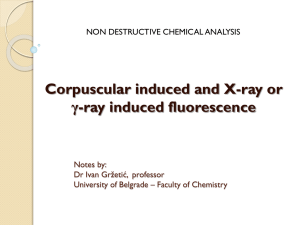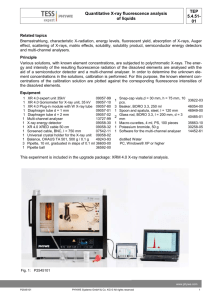SI_APL_CuO_DAquila_Hong_Final
advertisement
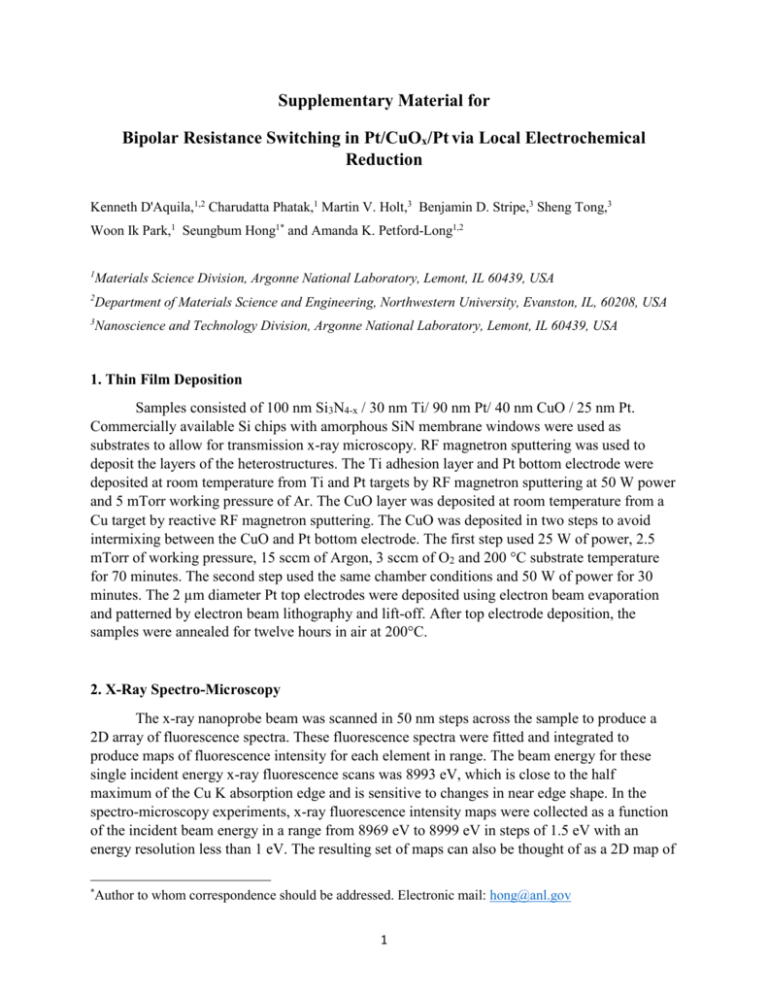
Supplementary Material for Bipolar Resistance Switching in Pt/CuOx/Pt via Local Electrochemical Reduction Kenneth D'Aquila,1,2 Charudatta Phatak,1 Martin V. Holt,3 Benjamin D. Stripe,3 Sheng Tong,3 Woon Ik Park,1 Seungbum Hong1* and Amanda K. Petford-Long1,2 1 Materials Science Division, Argonne National Laboratory, Lemont, IL 60439, USA 2 Department of Materials Science and Engineering, Northwestern University, Evanston, IL, 60208, USA 3 Nanoscience and Technology Division, Argonne National Laboratory, Lemont, IL 60439, USA 1. Thin Film Deposition Samples consisted of 100 nm Si3N4-x / 30 nm Ti/ 90 nm Pt/ 40 nm CuO / 25 nm Pt. Commercially available Si chips with amorphous SiN membrane windows were used as substrates to allow for transmission x-ray microscopy. RF magnetron sputtering was used to deposit the layers of the heterostructures. The Ti adhesion layer and Pt bottom electrode were deposited at room temperature from Ti and Pt targets by RF magnetron sputtering at 50 W power and 5 mTorr working pressure of Ar. The CuO layer was deposited at room temperature from a Cu target by reactive RF magnetron sputtering. The CuO was deposited in two steps to avoid intermixing between the CuO and Pt bottom electrode. The first step used 25 W of power, 2.5 mTorr of working pressure, 15 sccm of Argon, 3 sccm of O2 and 200 °C substrate temperature for 70 minutes. The second step used the same chamber conditions and 50 W of power for 30 minutes. The 2 µm diameter Pt top electrodes were deposited using electron beam evaporation and patterned by electron beam lithography and lift-off. After top electrode deposition, the samples were annealed for twelve hours in air at 200°C. 2. X-Ray Spectro-Microscopy The x-ray nanoprobe beam was scanned in 50 nm steps across the sample to produce a 2D array of fluorescence spectra. These fluorescence spectra were fitted and integrated to produce maps of fluorescence intensity for each element in range. The beam energy for these single incident energy x-ray fluorescence scans was 8993 eV, which is close to the half maximum of the Cu K absorption edge and is sensitive to changes in near edge shape. In the spectro-microscopy experiments, x-ray fluorescence intensity maps were collected as a function of the incident beam energy in a range from 8969 eV to 8999 eV in steps of 1.5 eV with an energy resolution less than 1 eV. The resulting set of maps can also be thought of as a 2D map of * Author to whom correspondence should be addressed. Electronic mail: hong@anl.gov 1 Cu K-edge absorption spectra in which the absorption is measured via the fluorescence yield. In this sense, this collection of measurements is “X-ray Absorption Near Edge Structure (XANES)like” map, except that we have measured the fluorescence intensity, not the transmitted beam or electron yield. 3. Current-Voltage Measurements To make current-voltage measurements with C-AFM, we used an Asylum MFP-3D AFM system and a Keithley 2400 Source Meter unit. The C-AFM probes were commercially available solid Pt-wire. In all measurements, bottom electrode was grounded and the voltage and current applied to the heterostructures were carefully limited in order to make the HRS and LRS retain a non-linear current-voltage relationship. Gentle electroforming was carried out in several voltage sweeps and by using the minimum compliance current necessary to obtain bi-stable currentvoltage hysteresis. To perform the SET operation, three steps were performed at negative voltages: a voltage sweep from 0 to −Vmax,ascend, a constant current hold at the compliance limit during which the voltage drops from −Vmax,ascend to −Vmax,descend, and a voltage sweep from −Vmax,descend to 0. To perform the RESET operation, a similar V-Sweep/I-Hold/V-Sweep procedure was performed at positive voltages. In the later discussion, the current density and electric field were estimated from the measured current and voltage data by assuming homogeneous current flow and dividing them by the pad area and CuOx thickness, respectively. 4. Energy Level Diagram The energy level diagram shown in Figure S1 illustrates how a difference between the Pt and CuOx work functions leads to band bending at the interface and a Schottky barrier for holes. As argued in the main article, the partial reduction of CuOx decreases its work function and lowers the Schottky barrier, enabling the low resistance state (LRS). FIG. S1. Proposed Energy Level Diagram at Pt/CuO interface 2 5. Electron Energy Loss Spectroscopy (EELS) The Cu L-edge of another SiN/Ti/Pt/CuOx/Pt heterostructure in the LRS was studied by spectrum imaging transmission electron microscopy (SI-TEM). A series of energy filtered TEM images were taken at 51 energy loss slices from 900 to 1000 eV in 2 eV steps with an energy slit width of 10 eV. Within a region in the CuOx layer, defined in the zero energy loss image shown in Figure S2 (a), the data cube was averaged in order to produce the reconstructed electron energy loss spectrum shown in Figure S2(b). The shape of this spectra is consistent with partially reduced CuOx.1 Although this spectrum was collected from a sample in the LRS, the probability of preparing a cross-section TEM sample in the precise location of a conducting bridge is very low. In light of this and the fact that the CuOx layer was deposited by reactive sputter deposition, we infer that our as-prepared CuOx layers are oxygen deficient and likely contain a number of oxygen vacancies. FIG. S2. (a) Cross-section zero energy loss TEM image and (b) electron energy loss spectrum of Cu L-edge reconstructed from the data cube by averaging over the area marked by a red box in (a). 1 N. Long and A. Petford-Long, Ultramicroscopy 20, 151 (1986). 3


